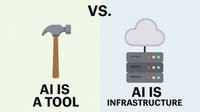Personalized Learning (PL), although a phrase in frequent use, still does not have a universally understood definition. I prefer to define it as an environment where strong relationships between students and teachers are formed and students are empowered to take control of their own learning. Additionally, PL places emphasis on understanding diverse learner needs and including individual interests, passions, and aspirations as a regular part of learning.
At the core of these ideas is the concept of student agency. Agency refers to the ability of the student to take purposeful, intentional action to direct their learning and by extension, their life. Students who have been nurtured to a high level of agency are not helpless bystanders waiting for someone to tell them what to do; they are empowered leaders, seeking out ideas that support their passions and creating the conditions they want for themselves and others.
Agency shapes both the process and the outcomes of student learning. The core features of agency enable students to play a significant role in their self-development, adaptation, and self-renewal. Through the process of understanding how to direct their own learning, students begin to believe their actions can influence desired outcomes; that they are the creators of their destiny. Building agency allows them to gain intrinsic motivation and persistence, both of which are necessary for life-long success.
In order to create the conditions for agency to occur, there must be a shift in how teachers engage students. The role of the teacher should no longer be confined to ‘keeper of the knowledge.’ The new classroom demands an environment where teachers and students co-create and learn together. Below is a continuum, based on the work of McClaskey and Bray, representing the gradual release of control from teacher-led to student-created learning.
|
Teacher-led |
Student-centered |
Student-directed |
Student-created |
|
|
|
|
Teachers must be willing to share ownership of the classroom and allow students to develop the skills necessary to become agents of their own learning. To support learners on their journey to ownership, teachers create the conditions for students as they grow their confidence, character, grit, and habits of mind. The new classroom becomes a lab for exploration and allows for failure in a safe space. Getting it right the first time is no longer the goal; the process of learning, unlearning, and relearning is now the primary focus. The shift from a teacher-led environment to a student-created environment takes time and patience but it is worth it. Because of the richness these opportunities and experiences provide, teacher-led, direct-instruction pales in comparison.
When we are courageous in our leadership and provide for the gradual release of control that supports learner agency, we are ensuring that our students have the needed skills to address the problems and challenges of the rapidly evolving world in which they live. As teachers, there is no greater gift that we can give.











